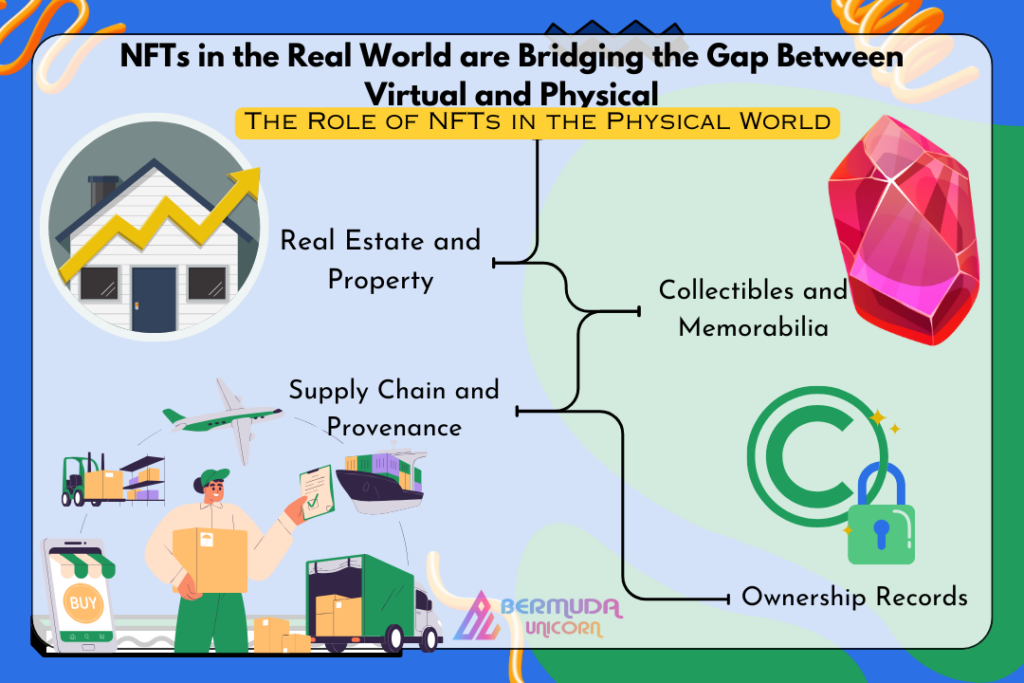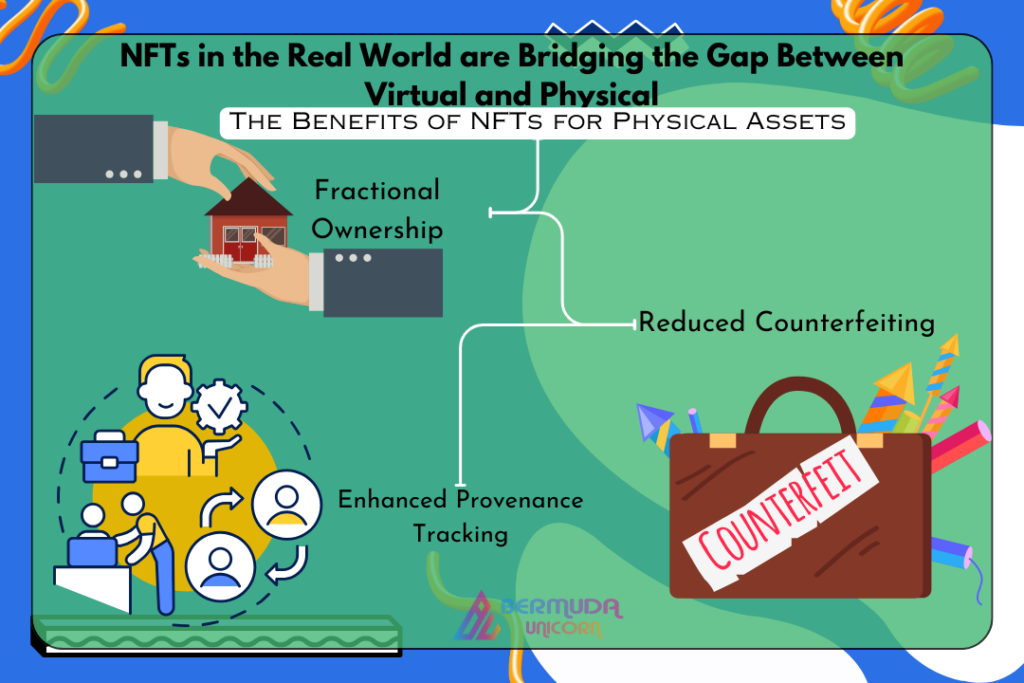![]()

In the ever-evolving landscape of digital technology, Non-Fungible Tokens (NFTs) have emerged as a transformative force that transcends the boundaries between the virtual and physical worlds. While NFTs are most commonly associating with unique digital assets like art, music, and virtual real estate. Also, they are increasingly leaving their mark in the realm of tangible, real-world assets. In this blog, we will explore how NFTs are bridging the gap between the virtual and physical worlds, revolutionizing various industries, and reshaping our understanding of ownership.
The Evolution of NFTs
NFTs at a Glance
Non-Fungible Tokens are unique digital assets that represent ownership or proof of authenticity of a particular item. Unlike cryptocurrencies like Bitcoin or Ethereum, NFTs are indivisible and cannot exchange on a one-to-one basis due to their uniqueness. Blockchain technology underpins them, ensuring security, transparency, and immutability.
From Digital Art to Tangible Assets
Initially, NFTs gained popularity as a means of buying, selling, and trading unique digital art, music, and collectibles. However, their potential soon extended far beyond the digital realm, paving the way for the tokenization of real-world assets.
The Role of NFTs in the Physical World
Real Estate and Property
NFT are revolutionizing the real estate industry by representing ownership of physical properties on the blockchain. Buyers can purchase tokens that correspond to a share in a real estate asset, enabling fractional ownership and simplifying the transfer of property. This potential democratizes real estate investment, making it more accessible to a broader range of investors.
Collectibles and Memorabilia
Tangible collectibles like sports memorabilia, rare stamps, vintage cars, and even luxury watches are undergoing tokenization as NFTs. This allows collectors to prove the authenticity and ownership of these items through blockchain technology, reducing the risk of counterfeiting and facilitating the trade of valuable physical collectibles.

Ownership Records
NFTs can function as digital certificates of ownership for physical assets like artwork, antiques, and jewelry. These tokens can link to physical items, providing an immutable and transparent record of ownership history. This is particularly valuable in verifying the authenticity of high-value items.
Supply Chain and Provenance
NFTs are also in use to track the provenance and authenticity of physical goods along the supply chain. By attaching NFT to products, manufacturers can ensure transparency and traceability, reducing the risk of counterfeit products entering the market.
The Benefits of NFTs for Physical Assets
Fractional Ownership
NFTs enable fractional ownership, allowing multiple individuals to collectively invest in high-value assets. This lowers the barrier to entry for investment in real estate, art, and other valuable assets.
Reduced Counterfeiting
The immutable nature of blockchain makes counterfeiting NFT extremely difficult, providing a robust solution to combat the proliferation of fake products in various industries.

Enhanced Provenance Tracking
NFTs provide a transparent and tamper-proof record of an asset’s history, making it easier to verify authenticity and provenance, which is especially critical for art, luxury goods, and high-end collectibles.
FAQs About NFTs in the Physical World
1. Can physical assets tokenized as NFTs be resold?
Yes, just like digital NFT, physical asset tokens can resell on NFT marketplaces. The ownership transfer records on the blockchain, ensuring transparency and security.
2. How do physical assets link to NFTs?
Physical assets can link to NFTs through unique identifiers, such as serial numbers, QR codes, or RFID tags. These identifiers record on the blockchain alongside the NFT, creating a secure connection between the digital token and the physical item.
3. Are there any legal challenges associated with tokenizing physical assets?
The legal framework for tokenizing physical assets is still evolving. It’s important to note that working with legal experts is essential to ensure compliance with existing regulations and to establish clear terms of ownership and transfer for NFT representing physical assets.
Conclusion
NFTs are breaking down the barriers between the virtual and physical worlds, offering new opportunities for ownership, investment, and authenticity verification across various industries. As the technology continues to mature, we can expect to witness even more innovative use cases for NFTs in the real world, further blurring the lines between the digital and physical realms. Whether it’s fractional ownership of real estate or proving the authenticity of a valuable collectible, NFTs are reshaping how we interact with and perceive the physical assets that enrich our lives.
